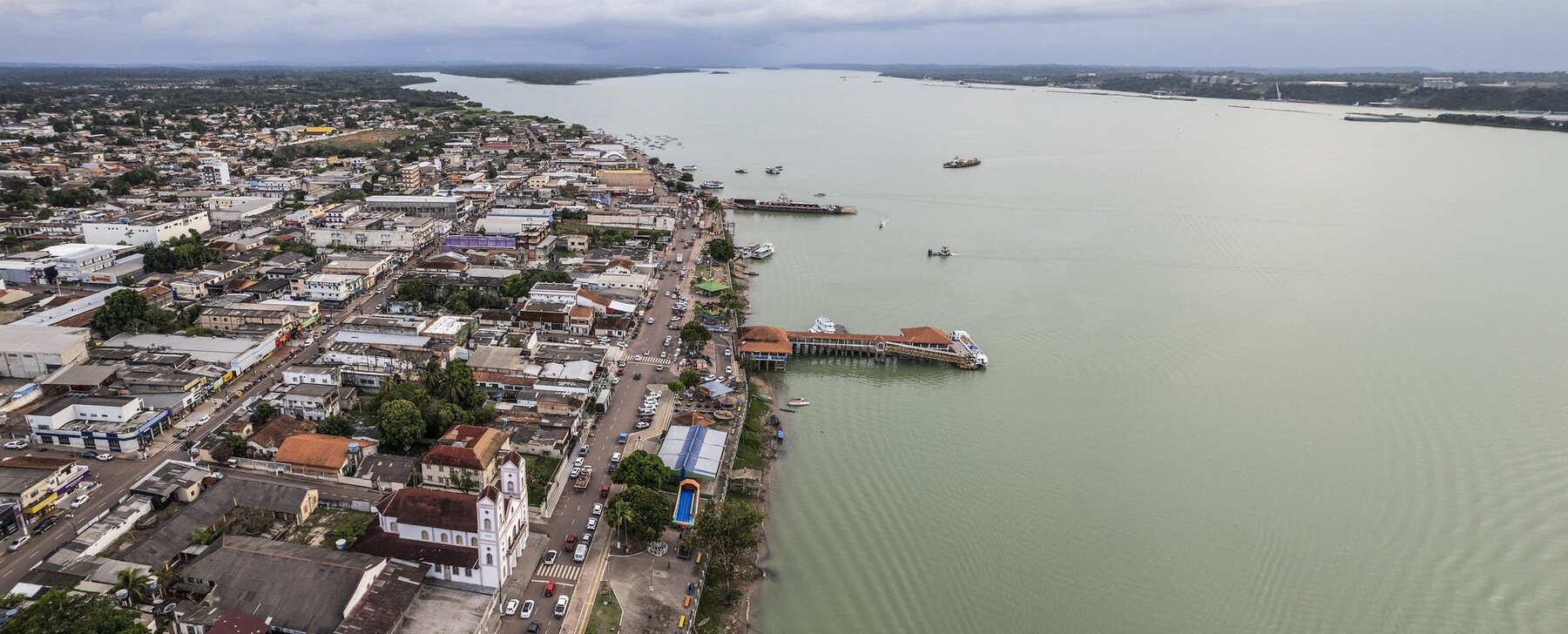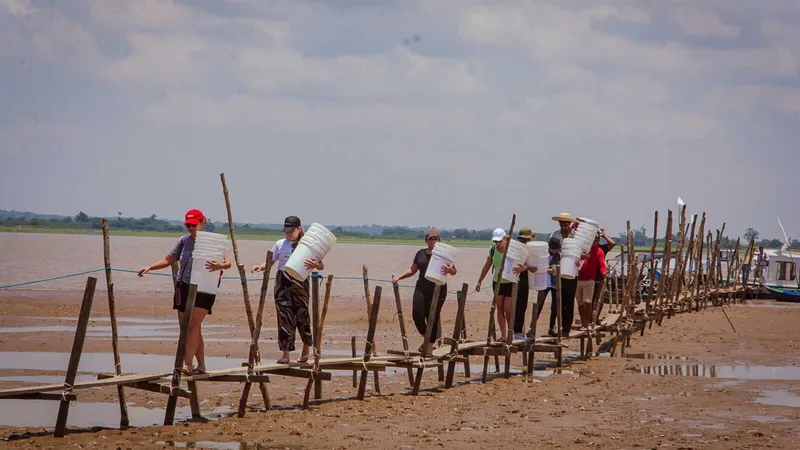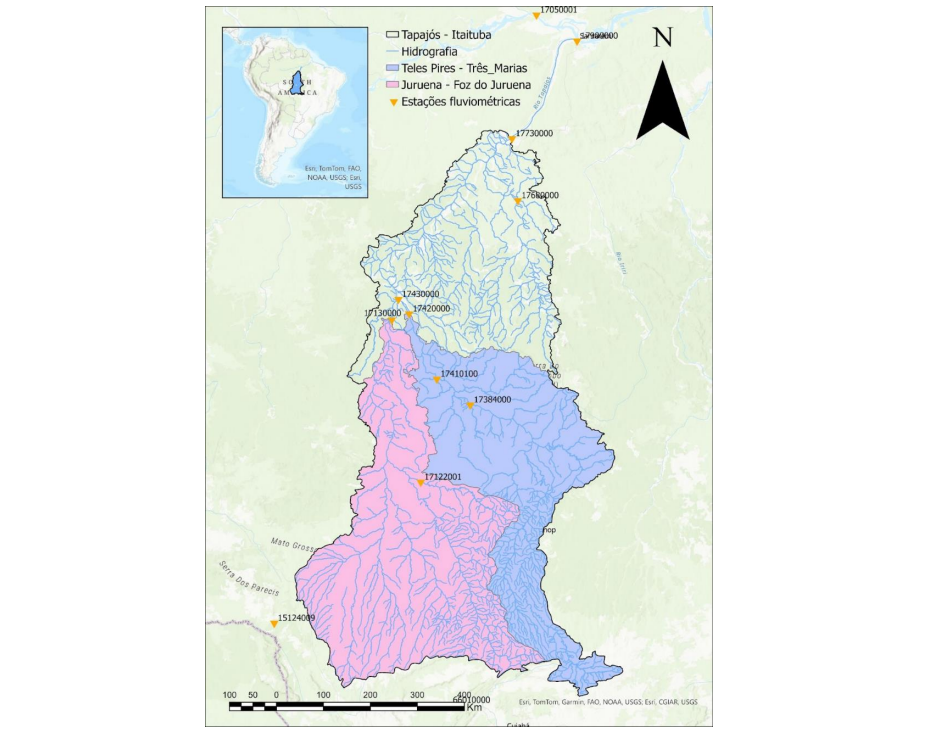Study points out that one of the main rivers in the Amazon will face moderate drought in 2025
18 de September de 2025

By Fabyo Cruz – From Cenarium
BELÉM (PA) – The Tapajós River, one of the most important in the Amazon and essential for navigation and supplying communities in Pará, is expected to face a moderately intense drought in 2025. The forecast comes from the Geological Service of Brazil (SGB/CPRM), linked to the Ministry of Mines and Energy (MME), which analyzed 50 years of records from the monitoring station installed in Itaituba (PA).
According to the technical note, the river level is expected to drop to around 2.2 meters during the low-water season, when the water naturally recedes, reaching its most critical point in the first week of November. The report highlights that “the most likely scenario for the 2025 low-water season points to a moderately intense drought, with minimum levels expected between 215 and 255 cm and a drought period of approximately 30 to 45 days.”

The SGB’s warning comes one year after the Tapajós recorded the worst drought in its history. In 2024, the river reached 83 centimeters in depth, which hampered boat transportation, compromised water supply, and affected riverside populations. This was the lowest level since measurements began in 1974.
For this year, the situation is expected to be less severe. This is because the El Niño climate phenomenon, which causes changes in rainfall in the Amazon and was very intense in 2023 and 2024, is now in a neutral phase. “The neutrality of ENSO [El Niño-Southern Oscillation] in the previous period favors the absence of extremes, tending toward behavior closer to the historical average,” explains the document.

Historical data
The report also analyzes the river’s behavior over the last five decades. According to the survey, droughts are becoming increasingly severe. “A statistically significant declining trend at a rate of -1.36 cm/year was identified. This result indicates more extreme low-water periods, with minimum levels systematically becoming lower over the last five decades,” the study states.
In other words, each year the Tapajós reaches slightly lower levels during the dry season, and this accumulation over decades increases the risk of longer and more intense droughts.
Furthermore, researchers noticed that while drought periods are becoming more critical, floods also tend to be more intense. This means the river has been showing greater variation between extremes, i.e., very high in some months and very low in others, making it difficult to plan for navigation and supply.
Influence of global climate
One of the central points of the study is the influence of global climate phenomena. El Niño, for example, showed a strong relationship with the Tapajós’ regime. “El Niño conditions in December are significantly correlated with lower minimum levels and longer droughts in the following year,” the technical note points out.

The Pacific Decadal Oscillation (PDO), which also affects global climate, did not show a direct correlation with droughts in the Itaituba region. In other words, it does not serve as a good indicator to predict the river’s low-water levels.
Importance of the Tapajós
The Tapajós River is considered one of the country’s most strategic waterways. It is used to transport grains, fuels, and various products, as well as to supply cities and riverside communities. Therefore, any variation in its levels directly affects the economy and the lives of the local population.
Based on the analyses, the SGB recommends that authorities remain alert and prepare for possible restrictions. “It is recommended that managing bodies, local authorities, and river users consider this scenario of moderate drought (~220 cm, ~45 days) as the most likely for planning logistical operations, navigation, and water supply in the Itaituba region by the end of 2025,” the report concludes.

